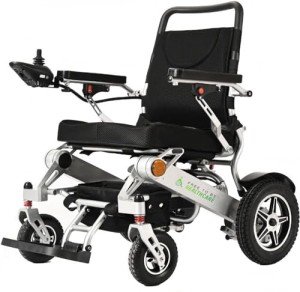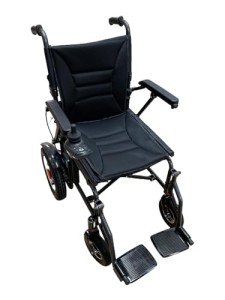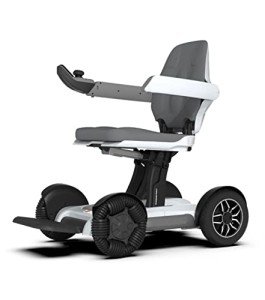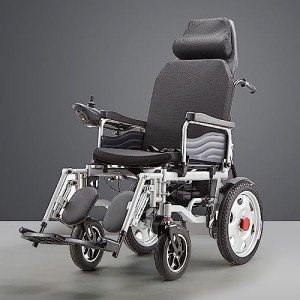In recent years, advancements in technology have dramatically changed various industries, including healthcare and personal mobility aids. Among these innovations, lightweight foldable electric wheelchairs equipped with remote control features have emerged as a revolutionary solution for many users. This guide explores the benefits, features, and considerations regarding lightweight foldable electric wheelchairs with remote control, providing a comprehensive understanding for potential users and caregivers.
Understanding Lightweight Foldable Electric Wheelchairs
Lightweight foldable electric wheelchairs represent a significant shift from traditional wheelchairs. They are designed to provide enhanced mobility and convenience for individuals with limited movement. Whether for daily use or travel, these wheelchairs have become increasingly popular among seniors and individuals with disabilities.
Features of Lightweight Foldable Electric Wheelchairs
The primary attributes of these electric wheelchairs include:
- Lightweight Design: Weighing often between 35 to 50 pounds, they are easily maneuverable and transportable.
- Folding Mechanism: The wheelchair can be folded into a compact size for easy storage and transportation, making it ideal for travel.
- Remote Control Functionality: Many models come with remote control operation, allowing users to move the wheelchair effortlessly without manual effort.
- Battery-Powered: These wheelchairs typically feature powerful lithium-ion batteries that can last for several hours, enhancing usability.
- Adjustable Seating: Comfort is paramount, and many models come with adjustable seating and backrest options.
Benefits of Lightweight Foldable Electric Wheelchairs with Remote Control
-
Portability: Their lightweight nature and ability to fold make them incredibly portable. Individuals can easily store them in the trunk of a car or take them on public transportation.
-
Enhanced Mobility: These wheelchairs can travel various terrains, ensuring users can navigate indoor and outdoor environments smoothly.
-
Ease of Use: The remote control functionality allows users to operate the wheelchair without physical exertion, making it accessible for those with limited upper body strength.
-
Compact Size: When folded, these wheelchairs occupy minimal space, making them suitable for those with smaller living areas or who spend significant time traveling.
-
Independence and Autonomy: Users can regain a degree of independence, enhancing their quality of life by enabling them to move freely and explore their surroundings.
Comparing Lightweight Foldable Electric Wheelchairs
To better understand the options available in the market, the following table compares several popular models based on their specifications:
| Model | Weight | Folded Dimensions | Max Speed | Battery Life | Remote Control |
|---|---|---|---|---|---|
| Model A | 38 lbs | 30” x 25” x 12” | 4 mph | 15 miles | Yes |
| Model B | 45 lbs | 32” x 26” x 14” | 5 mph | 20 miles | Yes |
| Model C | 40 lbs | 28” x 24” x 10” | 4.5 mph | 12 miles | Yes |
| Model D | 50 lbs | 34” x 28” x 16” | 6 mph | 25 miles | No |
Note: Specifications may vary by manufacturer; it is crucial to assess individual needs and consult product manuals or representatives.
Considerations When Choosing a Lightweight Foldable Electric Wheelchair
When selecting the perfect lightweight foldable electric wheelchair, individuals should consider the following factors:
- Weight Capacity: Ensure the wheelchair can accommodate the user's weight and size.
- Terrain Compatibility: Evaluate where the wheelchair will primarily be used (indoors, outdoors, rough terrain) and choose accordingly.
- Battery Life: The battery capacity significantly affects mobility; users should select a model that suits their daily travel needs.
- Comfort Features: Evaluate seating and backrest options to ensure comfort during use. Additional features such as seat cushions can also enhance the user experience.
- Warranty and After-Sales Service: Check for warranty periods and after-sales support, including repairs and maintenance, for peace of mind.
FAQs
1. How do I maintain a lightweight foldable electric wheelchair?
Regular maintenance involves checking the battery, cleaning the wheels, and ensuring the folding mechanism works smoothly. Consult the user manual for specific maintenance tips.
2. Are foldable electric wheelchairs safe for travel on airplanes?
Yes, most airlines allow foldable electric wheelchairs on board. However, it is essential to check with the airline for specific guidelines, especially concerning battery regulations.
3. Can I use a lightweight foldable electric wheelchair on uneven terrains?
While these wheelchairs are generally designed for various terrains, it is advisable to choose models specifically rated for outdoor use or rough terrains if that is a primary concern.
4. Do I need a driver’s license to operate an electric wheelchair?
No, a driver’s license is not required to operate an electric wheelchair, as they are classified as mobility devices. However, it is crucial to operate them safely and be aware of your surroundings.
Lightweight foldable electric wheelchairs with remote control are transforming the way individuals with mobility challenges navigate their lives. By providing increased independence, enhanced mobility, and convenience, these innovative devices are helping bridge the gap between immobility and freedom. As technology continues to advance, users can look forward to even more improvements in design, functionality, and accessibility.
The choices available may seem overwhelming at first, but understanding specific needs and preferences can lead to the perfect fit. Ultimately, investing in a lightweight foldable electric wheelchair can enhance the quality of life significantly, fostering independence and ensuring users can lead spirited and engaged lives.






